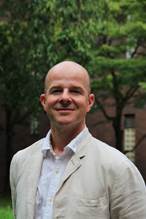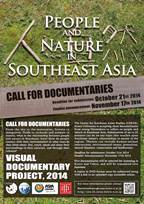Bringing untold stories to life

An interview with
Mario Ivan Lopez
Associate Professor
Center for Southeast Asian Studies
People and Nature in Southeast Asia: Call for documentaries
Visual documentaries offer a powerful way to describe the world around us. At Kyoto University's Center for Southeast Asian Studies (CSEAS), an innovative project invites young people in the ASEAN region to document their lives and the environments they live in on film. Mario Ivan Lopez, Associate Professor at CSEAS, explains more about this unique initiative.
How did the "People and Nature in Southeast Asia" documentary project come about?
Lopez: In 2011, the Center for Southeast Asian Studies received funding from the Japanese Ministry of Education, Culture, Sports, Science and Technology (MEXT) to initiate a new Large-Scale Research Program "Promoting the Study of Sustainable Humanosphere in Southeast Asia". The program, now in its fourth year, aims at strengthening networking and the construction of an East Asian academic community. One of the research divisions on the program focuses on "plural co-existence" in the region and has been examining its rich cultural and social diversity.
Why does the project focus on a visual approach in order to highlight human and environmental issues?
Lopez: Film can move people in a way that the written word cannot. We want to connect with an audience interested in a more visual side of Southeast Asia; through Southeast Asians' own perspectives and on their own terms. Another reason why we decided to do a documentary project is to raise awareness of the rich documentaries that can come from the region and initiate the creation of an archive of materials for future generations to enjoy.
Over the last three years, we have focused on three separate themes. In 2012, it was "care" in Southeast Asia. In 2013, we focused on "plural co-existence" and this year it is "people and nature". We chose people's relationships to nature and their natural environments due to the rapid environmental reconfigurations taking place in the region and their subsequent effects on the everyday lives of Southeast Asians. We also wanted to offer a theme that would allow people to explore the diverse ways in which they connect with the world around them from their multiple cultural, social, and imaginative perspectives.
I understand that documentaries from previous years can be viewed online. (See below for further links.) What has the reaction been like to these documentaries? Have you received any feedback from viewers in ASEAN countries?

The People and Nature in Southeast Asia Call for Documentaries
Lopez: These kinds of projects take time to get off the ground. CSEAS is primarily a research Center and we have had to start from scratch in creating a new network of contacts such as filmmakers and persons engaged in the visual arts in the region. This has been a challenge. However, the last year has seen some momentum as filmmakers in the region and here in Japan have started to take an interest in what we are doing. We have linked up with a number of Visual Art Centers and Universities both in and outside of the region and will hold a number of screenings in mainland Southeast Asian countries to keep the momentum going. We have also been honored to have received financial support from the Japan Foundation Asia Center who will co-sponsor this year’s event both in Kyoto and Tokyo. We hope that this will raise our profile and act as an impetus for more documentary filmmakers to participate in our project.
For this year's documentary project, what are the main criteria for selection?
Lopez: The criteria for selection will be at the discretion of the International Selection Committee, which is made up of three of CSEAS’ faculty and two external documentary film critics who are familiar with documentary film making in the region.
Can anybody based in ASEAN countries apply?
Lopez: Yes, we welcome documentary submissions from anyone who is a Southeast Asian national based in the region.
The Center for Southeast Asian Studies (CSEAS), Kyoto University
http://sea-sh.cseas.kyoto-u.ac.jp/en/What would be your advice to budding documentary-makers who have no previous experience sharing their work online for such a big project?
Lopez: We would hope that they will put their heart and souls into their productions to bring to the world the millions of untold stories that exist in the region to share with other people both here in Japan and in other countries around the world. Technology is now at such an affordable price that many people can access handheld cameras and DLRs to produce the stories they want to tell. We encourage, in particular, persons who are starting out to bring them to the attention of other more established documentary filmmakers.
Thank you very much for your time.
Published: 21 October 2014
Profile
Dr Mario Ivan Lopez is a cultural anthropologist whose work focuses on migration flows of people to Japan and within Southeast Asia. He has conducted research in Japan and the Philippines on international marriage and the formation of transnational families in both nations. His other research interests include studying the role of care in aging societies and how developed nations can respond to the needs of burgeoning aging populations.
Additional information
For further information about the Call for Documentaries, click here.
To view documentaries from previous years, see:
http://sea-sh.cseas.kyoto-u.ac.jp/en/visual-documentary-project2012/
http://sea-sh.cseas.kyoto-u.ac.jp/en/visual-documentary-project2013/
Kyoto University Research Administration Office (KURA)


